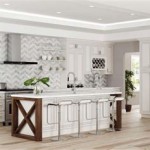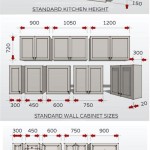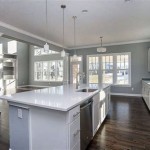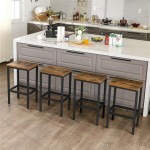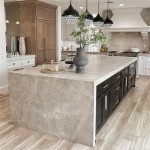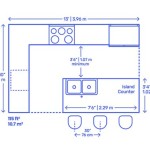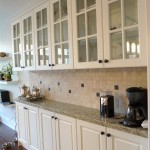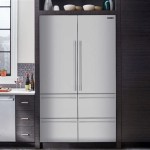Glass Pendant Kitchen Island Lights: A Comprehensive Guide
Kitchen island lighting plays a crucial role in both the aesthetic appeal and functional utility of a kitchen space. Among the myriad options available, glass pendant lights offer a unique combination of elegance, versatility, and effective illumination. The transparency of glass allows light to permeate the kitchen, creating a bright and inviting atmosphere while simultaneously serving as a decorative element that can complement a wide range of kitchen styles. This article provides a comprehensive overview of glass pendant kitchen island lights, covering their various styles, considerations for selection, installation guidelines, and maintenance tips.
Glass pendant lights are suspended fixtures that hang from the ceiling, typically using a cord, chain, or rod. Their primary function is to provide direct lighting to the kitchen island, which serves as a central hub for food preparation, dining, and social interaction. The glass component of these lights can vary significantly in terms of shape, size, color, texture, and design, allowing homeowners to choose fixtures that align with their specific aesthetic preferences and functional needs. The material employed can range from clear glass, which maximizes light output, to frosted or tinted glass, which diffuses light and adds a layer of visual interest.
Understanding the Styles of Glass Pendant Lights
The sheer variety of glass pendant light styles available on the market can initially seem overwhelming. Understanding the key categories and their characteristics is essential for making an informed decision. These categories often overlap, and many pendants incorporate elements from multiple styles, offering further customization options.
One prominent style is the
classic pendant
. These lights feature simple, timeless designs, often incorporating rounded or cylindrical glass shades. They are typically made from clear or lightly frosted glass and are designed to blend seamlessly with various kitchen decors. Classic pendants are often chosen for their understated elegance and their ability to provide ample illumination without overwhelming the space.Another popular option is the
modern pendant
. Modern pendants tend to embrace sleek lines, geometric shapes, and minimalist aesthetics. They often incorporate metallic accents, such as chrome, brushed nickel, or black finishes, which complement the glass shade. Common glass shapes include spheres, cubes, and elongated cylinders. Modern pendants are frequently seen in contemporary kitchens and aim to create a sense of sophistication and visual appeal.Industrial pendants
represent a more rugged and utilitarian style. They often feature exposed hardware, metal cages, and vintage-inspired designs. The glass shades may be clear or lightly tinted, allowing the Edison-style bulbs to be visible. Industrial pendants are well-suited for kitchens with an industrial or farmhouse aesthetic and add a touch of character and personality.Artisan pendants
are characterized by their unique and handcrafted designs. These lights often feature blown glass, intricate detailing, and vibrant colors. Artisan pendants serve as focal points in the kitchen and can be considered works of art in their own right. They are typically more expensive than other types of pendant lights but offer a level of individuality and craftsmanship that is unmatched.Mini pendants
are smaller versions of traditional pendant lights, typically measuring less than 10 inches in diameter. They are often used in clusters or rows to provide focused lighting over specific areas of the kitchen island. Mini pendants are ideal for smaller kitchens or for situations where multiple light sources are required.The selection of a specific style hinges on the overall design theme of the kitchen and the desired ambiance. Considering the existing cabinetry, countertops, and other fixtures will help ensure that the pendant lights complement the space and create a cohesive look.
Factors to Consider When Selecting Glass Pendant Lights
Beyond style, several practical factors should be considered when choosing glass pendant lights for a kitchen island. These factors relate to the size and layout of the kitchen, the intended use of the island, and the desired level of illumination.
Size and Proportion:
The size of the pendant lights should be proportional to the size of the kitchen island and the overall space. Overly large pendants can overwhelm a small kitchen, while undersized pendants may appear insignificant in a larger space. A general rule of thumb is to choose pendants that are approximately one-third the width of the island. The height of the ceiling also plays a role in determining the appropriate size. For high ceilings, larger, more dramatic pendants may be appropriate, while lower ceilings require smaller, more compact fixtures.Number of Pendants:
The number of pendants needed depends on the length of the kitchen island and the desired level of illumination. A common approach is to space the pendants evenly along the length of the island, typically with 24 to 36 inches between each light. For longer islands, three or more pendants may be necessary to provide adequate lighting. In some cases, a single, larger pendant may suffice if the island is relatively small.Light Output and Bulb Type:
The type of bulb used in the pendant light will significantly affect the light output and energy efficiency. Incandescent bulbs provide a warm, traditional light but are less energy-efficient than other options. Halogen bulbs offer a brighter, whiter light but also consume more energy than LEDs. LED bulbs are the most energy-efficient option and offer a long lifespan, making them a cost-effective choice over time. The color temperature of the bulb, measured in Kelvin (K), also influences the ambiance of the kitchen. Warmer color temperatures (2700K-3000K) create a cozy and inviting atmosphere, while cooler color temperatures (3500K-4000K) provide a brighter, more energizing light.Hanging Height:
The hanging height of the pendant lights is crucial for both aesthetic and functional reasons. The bottom of the pendant should typically be 30 to 36 inches above the surface of the kitchen island. This height allows for ample headroom while providing sufficient light for tasks performed on the island. For taller individuals or higher countertops, the pendants may need to be hung slightly higher. Adjustable cords or rods allow for flexibility in adjusting the hanging height to suit individual needs.Dimming Capabilities:
Installing a dimmer switch allows for adjusting the light intensity of the pendant lights, providing greater control over the ambiance of the kitchen. Dimming capabilities are particularly useful for creating a more relaxed atmosphere during meals or social gatherings. Not all bulbs are dimmable, so it's important to choose bulbs that are compatible with dimmer switches.Installation and Maintenance of Glass Pendant Lights
Proper installation is essential for ensuring the safety and longevity of glass pendant lights. While some homeowners may be comfortable with DIY projects, it is generally recommended to hire a qualified electrician to handle the installation. Electrical work can be dangerous, and improper installation can lead to electrical hazards or damage to the fixtures.
Safety Precautions:
Before beginning the installation process, it's important to turn off the power to the circuit breaker that controls the kitchen island lighting. This will prevent electric shock during the installation. It's also advisable to wear safety glasses and gloves to protect against potential hazards.Installation Steps:
The basic steps for installing glass pendant lights typically include the following:- Remove the existing light fixture.
- Install the mounting bracket provided with the new pendant light.
- Connect the electrical wiring according to the manufacturer's instructions, ensuring that the wires are properly secured.
- Attach the pendant light to the mounting bracket.
- Adjust the hanging height of the pendant, if necessary.
- Install the light bulb.
- Turn on the power to the circuit breaker and test the light.
Maintenance:
Glass pendant lights require regular cleaning to maintain their appearance and performance. Dust and debris can accumulate on the glass shades, reducing the amount of light that is emitted. The glass shades can be cleaned with a soft cloth and a mild cleaning solution. Avoid using abrasive cleaners or scouring pads, as these can scratch or damage the glass. Periodic inspection of the wiring and connections is also recommended to ensure that everything is in good working order.By carefully considering the style, size, light output, and installation requirements, homeowners can select glass pendant kitchen island lights that enhance the beauty and functionality of their kitchen. These elegant and versatile fixtures provide both direct lighting and decorative appeal, making them a valuable addition to any kitchen space.

Seline Textured Glass Kitchen Island Pendant Light

Our Big Light Swap

Kitchen Island Pendant Lighting Hazeltine 4c Home Plan Ankeny Custom Caliber Homes Iowa

Blown Glass Island Lighting Light Fixture For Kitchen Boho Décor Li Pendant Lamp Home Etsy

Jim Lawrence Pendant Lighting For Kitchen Islands Humphrey Munson

Our Eden Globe Pendants Look Perfect Above This Kitchen Island Mullan Lighting

Modern Glass Pendant Lights Focal Decor

Modern Dome Clear Glass Pendant Light Thehouselights Dining Room Lights Over Table Lighting

Large Pendant Light For Over An Island Lighting Stained Glass Hanging Kitchen 33 Fascinating Colors Etsy

Coria Modern Glam Glass Island Led Pendant Light Ceiling Fixture For Dining Room D 6 7 X H 18 Walmart Com
See Also

